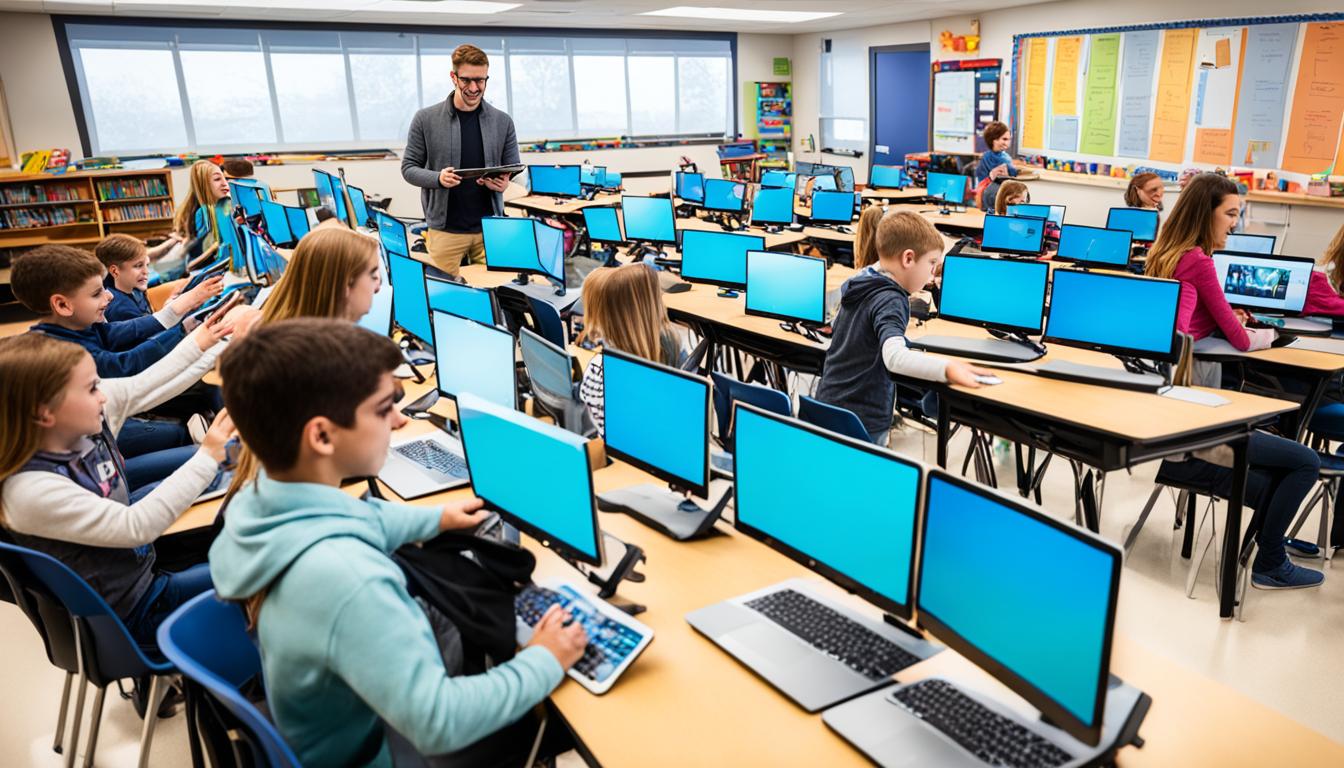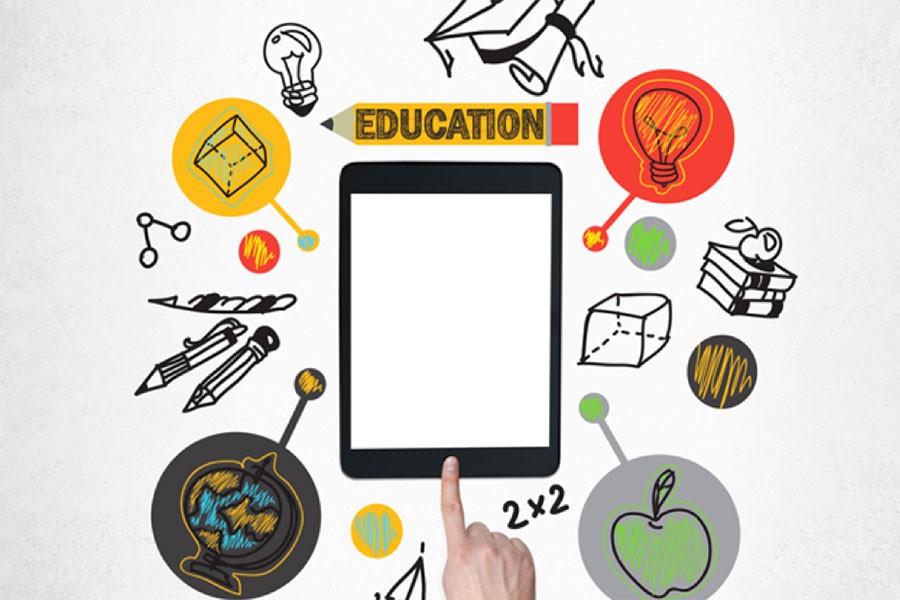Boost Your Learning Experience with Cutting-Edge Education Platforms
Boost Your Learning Experience with Cutting-Edge Education Platforms
Blog Article
Comprehensive Business Guides for Advancing Innovation Education in Schools and Colleges
The combination of technology education and learning right into school and college educational program has come to be a vital important in preparing trainees for a progressively digital workforce. Comprehensive company guides play an essential duty in this change by laying out the necessary frameworks for efficient program application, promoting important market collaborations, and gauging instructional results. As instructional establishments strive to align themselves with market needs, the opportunities and obstacles presented by these guides warrant a closer examination. Insurance. What particular approaches can be adopted to maximize their effect on both instructors and students?
Importance of Technology Education
As innovation remains to evolve at an unmatched rate, the value of innovation education and learning has come to be increasingly apparent in today's culture. The integration of modern technology into various facets of life demands that people possess a foundational understanding of technological concepts and applications. This understanding not just improves employability however also promotes critical reasoning and analytical skills essential for navigating a vibrant workforce.
In schools, innovation education furnishes students with the ability to adapt to fast adjustments in markets driven by development. It urges imagination and empowers students to involve with emerging modern technologies, from expert system to data analytics. Furthermore, technology education promotes digital literacy, which is important in a period where info is conveniently available yet usually misleading.

Trick Parts of Effective Guides
Efficient guides for modern technology education and learning have to encompass several key components to ensure that learners get the most from their experiences. Initially, a distinct curriculum is important, laying out the purposes, discovering outcomes, and the skills to be created. This educational program should be frequently upgraded to mirror the quickly progressing technical landscape, ensuring significance and applicability.
Second, extensive sources that include textbooks, online products, and hands-on tools are essential. These resources must be varied and easily accessible, satisfying numerous finding out styles and choices. Furthermore, incorporating real-world situations and case research studies can enhance understanding and involvement.
Third, assessment techniques should be consisted of to evaluate student progress properly. These evaluations must be differed, incorporating summative and developmental examinations that line up with the understanding goals.
Furthermore, professional advancement possibilities for educators are crucial. Training programs and workshops can equip instructors with the current instructional methods and technological developments.
Finally, promoting a collaborative understanding environment encourages peer interaction and expertise sharing. By including these key parts, guides for modern technology education can dramatically improve the learning experience, preparing trainees for future obstacles in an increasingly electronic world.
Structure Sector Collaborations
Structure solid industry collaborations is a vital aspect of boosting technology education and learning. These cooperations between academic establishments and services create a vibrant ecological community that profits students, teachers, and employers alike. By fostering connections with sector colleges, leaders and universities can straighten their educational programs with the evolving demands of the job market, ensuring that trainees acquire pertinent skills and expertise.
The development of teaching fellowships, apprenticeships, and mentorship programs acts as a foundation of these partnerships. Such chances offer trainees with hands-on experience, boosting their employability and useful understanding of technology applications. In addition, sector companions can offer insights into arising fads and technical innovations, enabling instructors to adapt their training approaches accordingly.
Moreover, partnerships can assist in access to resources, such as equipment, software program, and funding for research study tasks. These payments improve the finding out environment and allow institutions to remain at the leading edge of technical innovation. Inevitably, constructing durable market partnerships is necessary for growing a skilled labor force that meets the needs these days's rapidly changing technical landscape, while additionally driving economic development and competition in the more comprehensive area.
Implementing Innovation Programs
Implementing innovation programs within educational institutions requires a strategic strategy that focuses on both educational program development and resource allotment. To start successful modern technology combination, institutions need to initially evaluate their existing facilities and recognize gaps in sources, consisting of equipment, software application, and workers training. This assessment makes it possible for institutions and colleges to develop a customized strategy that aligns with their explanation details academic objectives.
Next, it is important to establish a detailed educational program that includes arising innovations and market standards. Working together with teachers, sector professionals, and stakeholders click to read more can make sure that the curriculum stays effective and pertinent in preparing pupils for the labor force (Education). In addition, expert advancement for faculty is critical, as it equips instructors with the abilities needed to efficiently teach new innovations
Furthermore, establishments need to stress the significance of hands-on understanding experiences, such as laboratories and workshops, that enable trainees to apply academic knowledge in useful setups. This experiential approach improves involvement and promotes vital thinking. Finally, securing sustainable funding via partnerships and grants can aid expand and keep technology programs, guaranteeing long-lasting success and flexibility in an ever-evolving technological landscape.
Measuring Success and Results
Examining the success and outcomes of technology education and learning programs is important for verifying their effect and leading future enhancements. Effective measurement structures need to encompass both qualitative and measurable metrics, providing a comprehensive view of program efficiency. Key efficiency indications (KPIs) such as trainee enrollment figures, retention rates, and training course conclusion percents provide beneficial quantitative data.

Integrating standard analyses can additionally review students' technological proficiencies and readiness for the workforce. Benchmarking versus comparable establishments enables for contextually appropriate contrasts, highlighting areas for growth.
Eventually, the constant analysis of technology education and learning programs promotes a culture of enhancement, making certain that they advance abreast with industry needs and instructional standards. By methodically measuring success, institutions can not just demonstrate liability to stakeholders but likewise enhance their offerings, therefore enriching the learning experience and preparing students for the ever-changing technical landscape.
Final Thought

The assimilation of technology education and learning into institution and university educational program has ended up being an essential essential in preparing students for a progressively digital labor force.As technology proceeds to progress at an unprecedented pace, the importance of innovation education and learning has ended up being increasingly obvious in today's society.In educational institutions, technology education furnishes students with the capacity to adapt to fast adjustments in sectors driven by innovation. By prioritizing innovation education, institutions can cultivate a generation of educated people capable of leveraging technology for societal and personal development. The execution of durable analysis methods enables establishments to determine success and end results, eventually enhancing the general effectiveness of modern technology education and learning campaigns and preparing pupils for future challenges.
Report this page